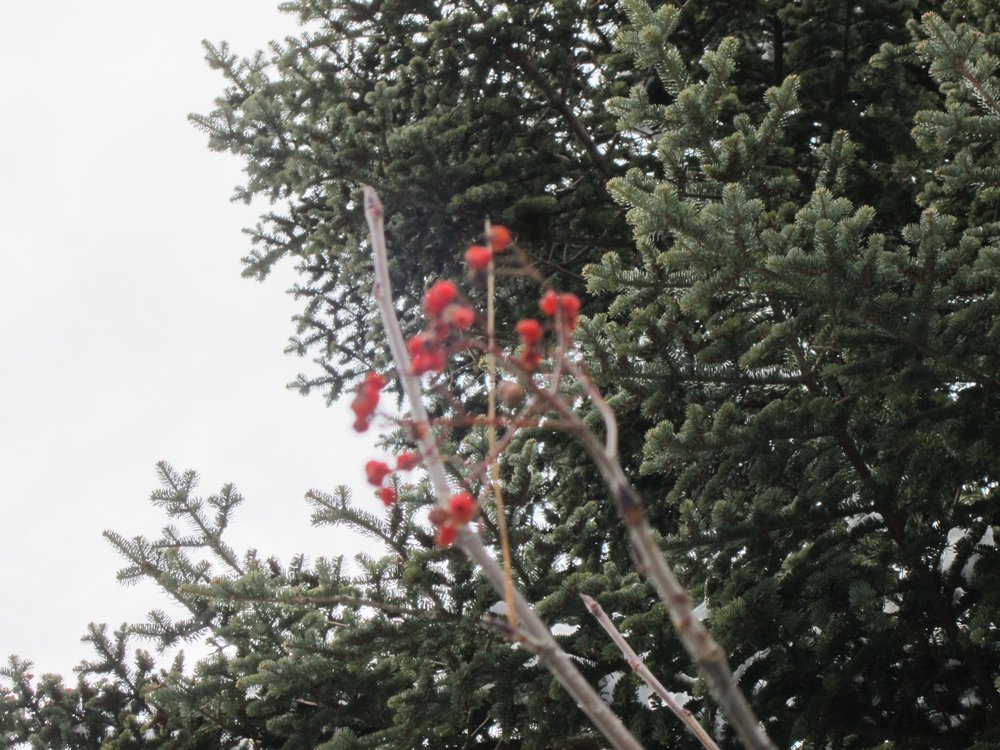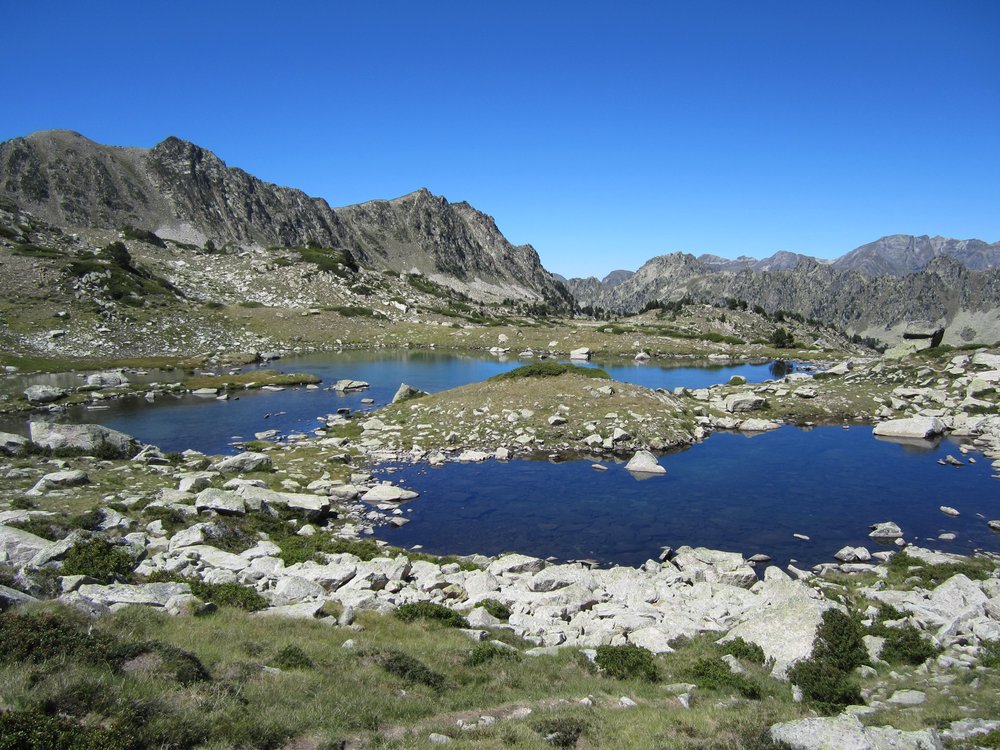Lists

And then there are the other lists in my life. The list of climbs I have scaled—this exists only in my mind. The list of mountains I have climbed in the Catskills. There are 35 over 3,500 feet and getting up all of them is a vague goal of mine. But I can never keep track of what I’ve done and so that list is both incomplete and inaccurate. The list of birds I have seen. This is a list that birders take seriously. But once again my keeping track is haphazard. Some days I come home from birding and carefully highlight the new bird in my Sibley’s and mark the date and place. But often I forget. I get home and make tea and go on with my busy life. Somehow I think I would be a better person if I could keep these lists; keeping track of my climbs, my mountains, my birds would be tending to my life. And that attention would make me more focused, more attentive to detail. Would life be neater if these lists were in order?

And then there are the other lists in my life. The list of climbs I have scaled—this exists only in my mind. The list of mountains I have climbed in the Catskills. There are 35 over 3,500 feet and getting up all of them is a vague goal of mine. But I can never keep track of what I’ve done and so that list is both incomplete and inaccurate. The list of birds I have seen. This is a list that birders take seriously. But once again my keeping track is haphazard. Some days I come home from birding and carefully highlight the new bird in my Sibley’s and mark the date and place. But often I forget. I get home and make tea and go on with my busy life. Somehow I think I would be a better person if I could keep these lists; keeping track of my climbs, my mountains, my birds would be tending to my life. And that attention would make me more focused, more attentive to detail. Would life be neater if these lists were in order?

A few days before, eight birders had trudged to the summit of the mountain in an attempt to re-find the bird. They were all expert birders and what they came up with was a robin on the summit. This big “dip,” as a birder would say, didn’t discourage me. I would find the bird.
The road into the trail head winds through the isolated and rather quaint town of Maplecrest. In these remote towns I wonder how people make their living. Some are farming, but most houses stand lonely, seemingly braced to weather a Catskill winter. The road out of town passed by an image of hurricane Irene-related destruction: houses stood cock-eyed near the creek that had expanded to four times its usual width. The pile up of boulders and trees was frightening to see, the force palpable months later. The rising, rushing water had killed one elderly woman in Maplecrest. Many of these Catskill towns are still reeling from the storm—rebuilding bridges, roads, and houses.
At the trailhead we layered on our clothes, which we then systematically took off as we started to climb. This winter, we can agree, has been spookily mild and there was but a dusting of snow on the ground. Still, it was slick and when I went down the first time I put on my micro-spikes to help me climb. At a saddle, our group parted ways, some heading for the summit of Blackhead (a peak some needed), while my friend Mary and I went for the summit of Black Dome. “Don’t worry, I’ll be quiet,” Mary promised. We had been chatting away up the hill, but I had kept an ear cocked for any sounds. All I got was silence, and a few Black-capped Chickadees.

The summit was eerily silent. We walked slowly, pished from time to time, listened, looked. If the bird wasn’t here, where might it have gone? And then out of the corner of my eye, I saw a bird fly into a spruce tree. “I saw it too,” Mary (not a birder) confirmed. She stood on the path while I walked through thick bushes toward the tree. The bird flushed and Mary pointed to where it had vanished. We compared notes on size and color—it had to be the bird!--and I felt my blood tingle with a just miss.
We settled in to eat some lunch, hoping the bird might return. But after twenty minutes of loitering we were cold and the woods were silent.
Soon, we headed downhill. I had added nothing to my lists, not a new bird or a new peak. Yet when we arrived at the car I felt that familiar elation of a day spent outdoors, of cold and exercise and wind making my blood flow, my ideas warm.
My bird list will remain messy and incomplete, like all of my lists. Perhaps in fact that is the nature of a list, to be a process, to be unfinished, to always have more I want to see or do or experience. What I can say is there are no regrets as there is nothing like a day spent among trees, my senses alert, looking but not finding a rare bird.
Pyrenees Hike, or, the Endless End

We wind up the col du Tourmalet, a pass famous in the grueling tour de France, passing many cyclists. Some look fit, others are wobbling they are barely moving forward; all are sweating, breathing heavily. Two years ago my brother-in-law Olivier and I had bicycled up the shorter but still steep Col d’Aspin on bicycles I’d given to Becky and Olivier as wedding gifts. That makes them 25 years old. Every kilometer there are signs that tell you the steepness of the grade (10% starts to really hurt). But the signs encouraged me, setting my sites on the next sign, a kilometer away.


We wind up the col du Tourmalet, a pass famous in the grueling tour de France, passing many cyclists. Some look fit, others are wobbling they are barely moving forward; all are sweating, breathing heavily. Two years ago my brother-in-law Olivier and I had bicycled up the shorter but still steep Col d’Aspin on bicycles I’d given to Becky and Olivier as wedding gifts. That makes them 25 years old. Every kilometer there are signs that tell you the steepness of the grade (10% starts to really hurt). But the signs encouraged me, setting my sites on the next sign, a kilometer away.

Becky slips on a rock landing hard on her hand, and nicking her nose. She’s bleeding. I put a water soaked bandana to her nose and wonder if she should keep hiking. I’m secretly hoping that she’s ok, but hesitant about hiking because then we could sit for a while, and—look at birds. But Becky’s a trooper, and up she goes, ready to tackle the pass in front of us, the col de Madamète, at 2,657 meters. The path up is gentle, following a stream, and flanked by wide, green fields. Alpine flowers—bluebells, and others I don’t know dot the landscape. From time to time we pass a stand of pine trees. I spy a pied flycatcher, and higher up the small, lively Alpine accentor.
We stop at the col, which gives us vistas down into the valley on the far side, and into the Neouvielle chain of mountains, including the dramatic Vignemale and Balaitous. Two lakes, the Cape de Long and d’Orédon dot the valley below. A trail loops us toward the west, into another valley.
 Half an hour past the col there’s suddenly no one. In the same way that the most popular trails are crowded, secondary trail are empty. There’s a deep sense of silence, as I stand in a valley, admire the high peaks, and wonder where all the big raptors are. There are none in this valley.
Half an hour past the col there’s suddenly no one. In the same way that the most popular trails are crowded, secondary trail are empty. There’s a deep sense of silence, as I stand in a valley, admire the high peaks, and wonder where all the big raptors are. There are none in this valley.
We pass the blue-green Lac de Tracens, and I clamor about swimming. The high sun is battling against the cooler air of high altitude, and winning. I’m hot. Only at the next lake do we stop, the Lac Blanc. There, we dip our feet into the water and watch fish nibble at our feet. Then I plunge in, the shock of cold delicious on my sun-tightened skin.
And then there is the descent into the valley where we parked. What didn’t seem that long on the way up, is endless on the way down. “Don’t you know,” Becky says, “that the ends are always endless.”